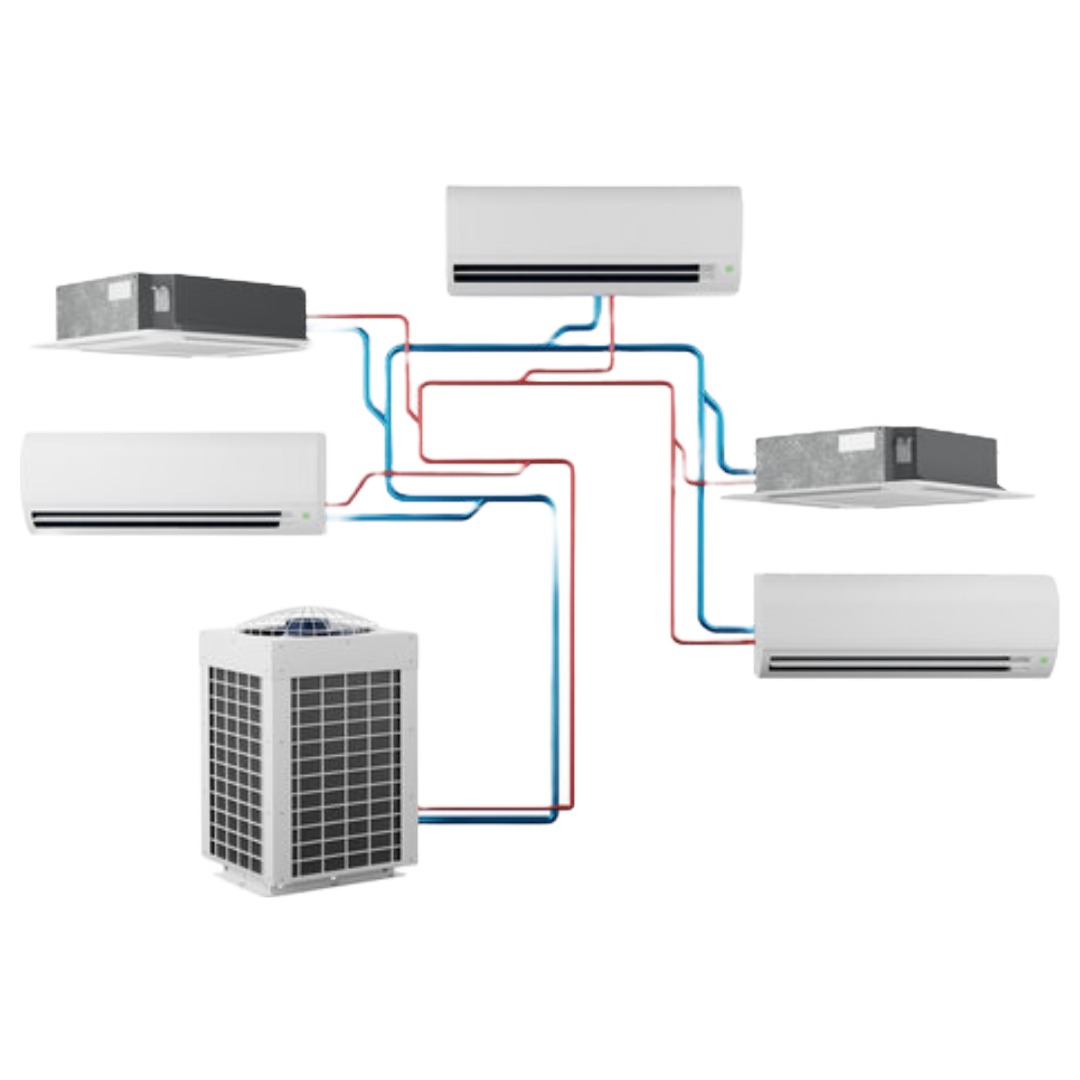VRF Systems
VRF - Variable Refrigerant Flow
Variable refrigerant flow, or VRF, is a term that describes how this system uses refrigerant to provide both cooling and heating. VRF, to put it simply, is a highly effective, ductless, large-scale HVAC system.
In contrast to split AC equipment, VRF permits the operation of multiple indoor units on a single system, which is tailored to the application in question. The simultaneous heating and cooling capability of VRF systems makes them either heat pumps or heat recovery systems.
Inverter compressors are how VRF systems achieve their high efficiency. When necessary for each space, inverter systems enable the compressor to ramp up or down. The compressor ramps up continuously in a non-inverter system. In essence, it is either on or off. Efficiency improvements may be significant when using inverter systems at lower speeds and capacities.
Due to their adaptability, VRF products can be tailored to fit the requirements of almost any project, which makes them especially appealing to facility managers and those who require commercial air conditioning.
How do VRF systems work?
In place of a cooling system that uses water, the VRF system only uses refrigerant. A VRF system is quick to respond, adapts to outdoor conditions, and does not require chillers or coils.
Inverter compressors are used with VRF systems. In order to conserve energy, this enables the compressor motor to run at different speeds. Your HVAC system modifies energy usage based on heating and cooling requirements, much like your car’s “eco mode.”.
Within a single system, a VRF system supports multiple air handlers. An indoor unit mounted on the wall or ceiling is used to distribute air throughout various rooms or spaces because the VRF system does not use ducts. Depending on the room or space, this enables users to make more precise heating and cooling decisions.

Benefits of getting your VRF Systems installed by Frost Air
- Energy efficiency: Contrary to other systems where leaky or unprotected ducts lead to a lot of wasted energy. Customers typically enjoy cost savings in utility bills and increased comfort after a VRF system installation.
- Customizable temperature settings: If the right VRF HVAC system for the building is selected, occupants can heat and cool different zones at the same time.
- Sleek and compact: Compared to traditional equipment, VRF HVAC units are much less bulky, making them an excellent solution for retrofitting, renovating or outfitting areas with limited space.
- Scalability: Once thought to be mainly for commercial buildings, VRF systems have advanced to be compatible with a range of heating and cooling products. They can scale to control the climate in a small single-family home or a commercial high-rise.
- Quiet: VRF systems reduce ambient noise both inside the building as well as outside, particularly in comparison to traditional HVAC technology.
- Easy to install: Contrary to ducted HVAC equipment is comparatively heavier, VRF is not but, it should be installed only by trained and certified professionals and Frost Air boasts of a team of such trained and experienced technicians.
